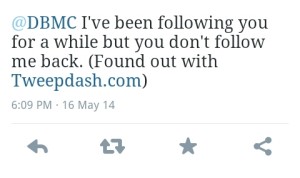The most important trait for any communicator
Several months ago I attended a presentation on content marketing. The presenter has become a mini-celebrity in the field, and has even published a book on the subject. However, this person had the unfortunate tendency to let her voice lower so much you had to strain to hear her. It was completely distracting and seriously took away from the content of the presentation. I don’t think I could sit through another presentation in spite of her expertise in the field.
Just this morning, I came across an article from Inc. Magazine entitled “5 Ways People Hurt Their Credibility.” It points out that you can seem less credible by not controlling your voice (the situation I pointed out above) or by having poor posture. Obviously, as a communicator, it’s important to establish your credibility. Credibility is key to convincing your clients that your communications plan will help boost their recognition or establish their brand. You won’t get far in pitching the media if you lack credibility.
There’s no doubt that you must establish and protect your credibility and the trait that will allow you do so is self-awareness. If you aren’t self-aware, you won’t even be able to recognize any of the behaviors pointed out in the Inc. article.
So many people are blind to their shortcomings precisely because their biggest shortcoming is a lack of self-awareness. If you aren’t able to examine your behaviors and beliefs to find areas for improvement, you aren’t able to change. And you will continue to do stuff that may be detrimental to your career.
How do you become more self-aware? You start with the knowledge that you will need to start paying close attention to what you are doing and how people are reacting to you. You can also ask for feedback to see if how people perceive you is the same as the way you perceive yourself.
Do you agree that self-awareness is the most important trait any communicator should have? If not, what do you think? Let me know in the comments.
About Deborah Brody
Deborah Brody writes and edits anything related to marketing communications. Most blog posts are written under the influence of caffeine.





